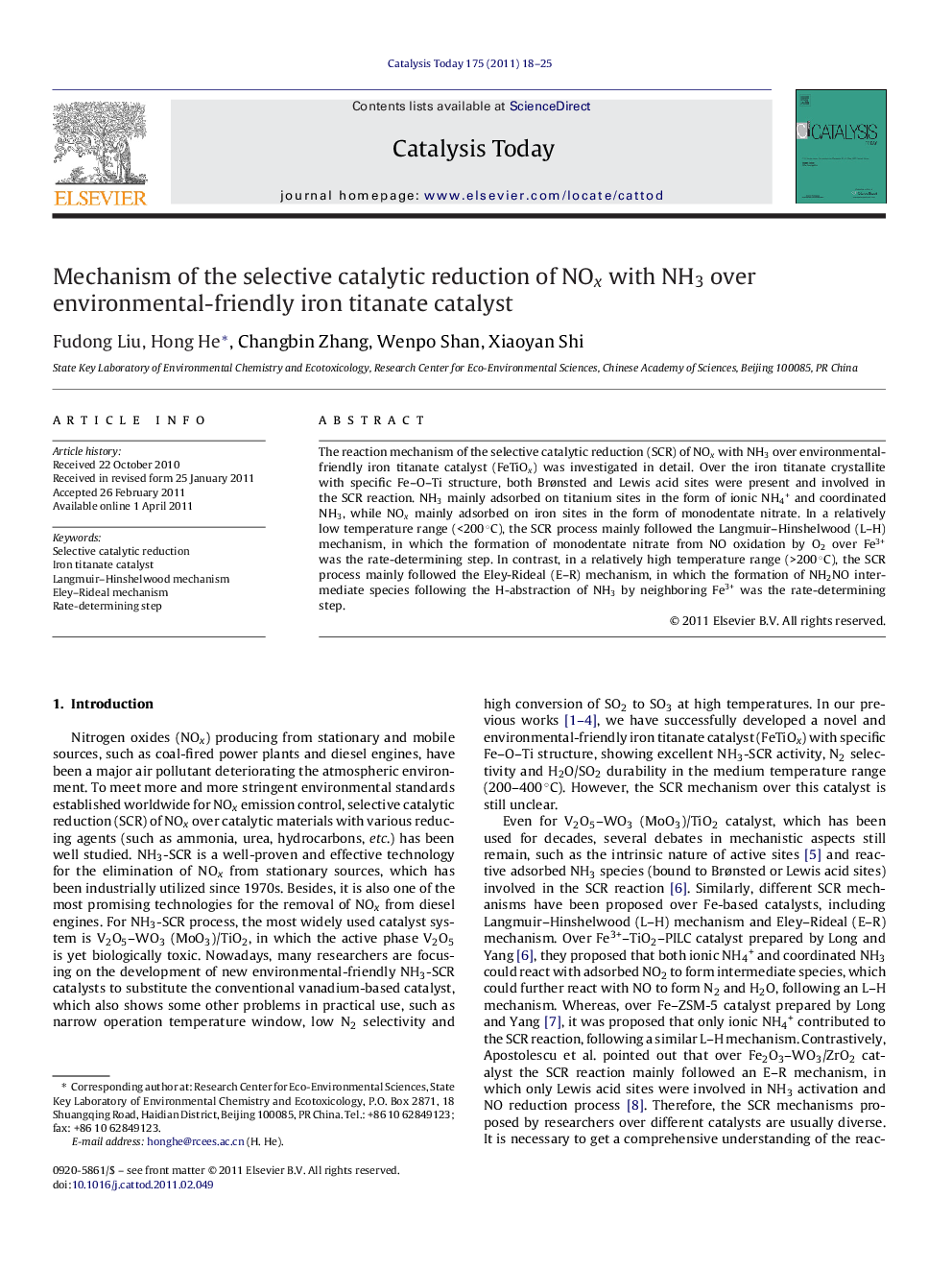| کد مقاله | کد نشریه | سال انتشار | مقاله انگلیسی | نسخه تمام متن |
|---|---|---|---|---|
| 55716 | 47063 | 2011 | 8 صفحه PDF | دانلود رایگان |

The reaction mechanism of the selective catalytic reduction (SCR) of NOx with NH3 over environmental-friendly iron titanate catalyst (FeTiOx) was investigated in detail. Over the iron titanate crystallite with specific Fe–O–Ti structure, both Brønsted and Lewis acid sites were present and involved in the SCR reaction. NH3 mainly adsorbed on titanium sites in the form of ionic NH4+ and coordinated NH3, while NOx mainly adsorbed on iron sites in the form of monodentate nitrate. In a relatively low temperature range (<200 °C), the SCR process mainly followed the Langmuir–Hinshelwood (L–H) mechanism, in which the formation of monodentate nitrate from NO oxidation by O2 over Fe3+ was the rate-determining step. In contrast, in a relatively high temperature range (>200 °C), the SCR process mainly followed the Eley-Rideal (E–R) mechanism, in which the formation of NH2NO intermediate species following the H-abstraction of NH3 by neighboring Fe3+ was the rate-determining step.
Figure optionsDownload high-quality image (184 K)Download as PowerPoint slideHighlights
► Both Brønsted and Lewis acid sites were involved in NH3-SCR reaction over FeTiOx.
► Below 200 °C, NH4+ and monodentate nitrate reacted through an L–H mechanism.
► The formation of monodentate nitrate was the rate-determining step below 200 °C.
► Above 200 °C, surface NH2 and gaseous NO reacted through an E–R mechanism.
► The formation of NH2NO after H-abstraction of NH3 was the rate-determining step.
Journal: Catalysis Today - Volume 175, Issue 1, 25 October 2011, Pages 18–25